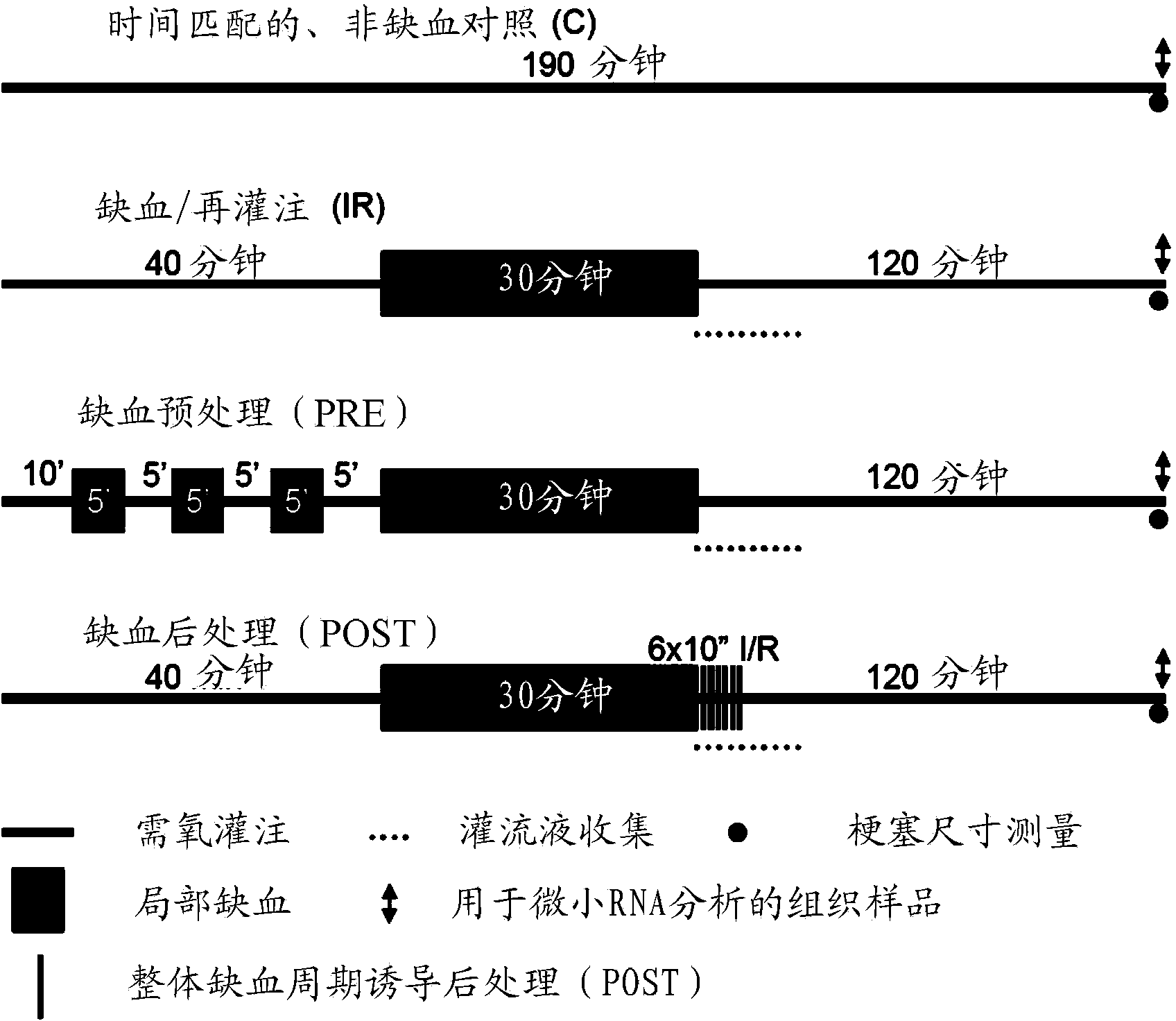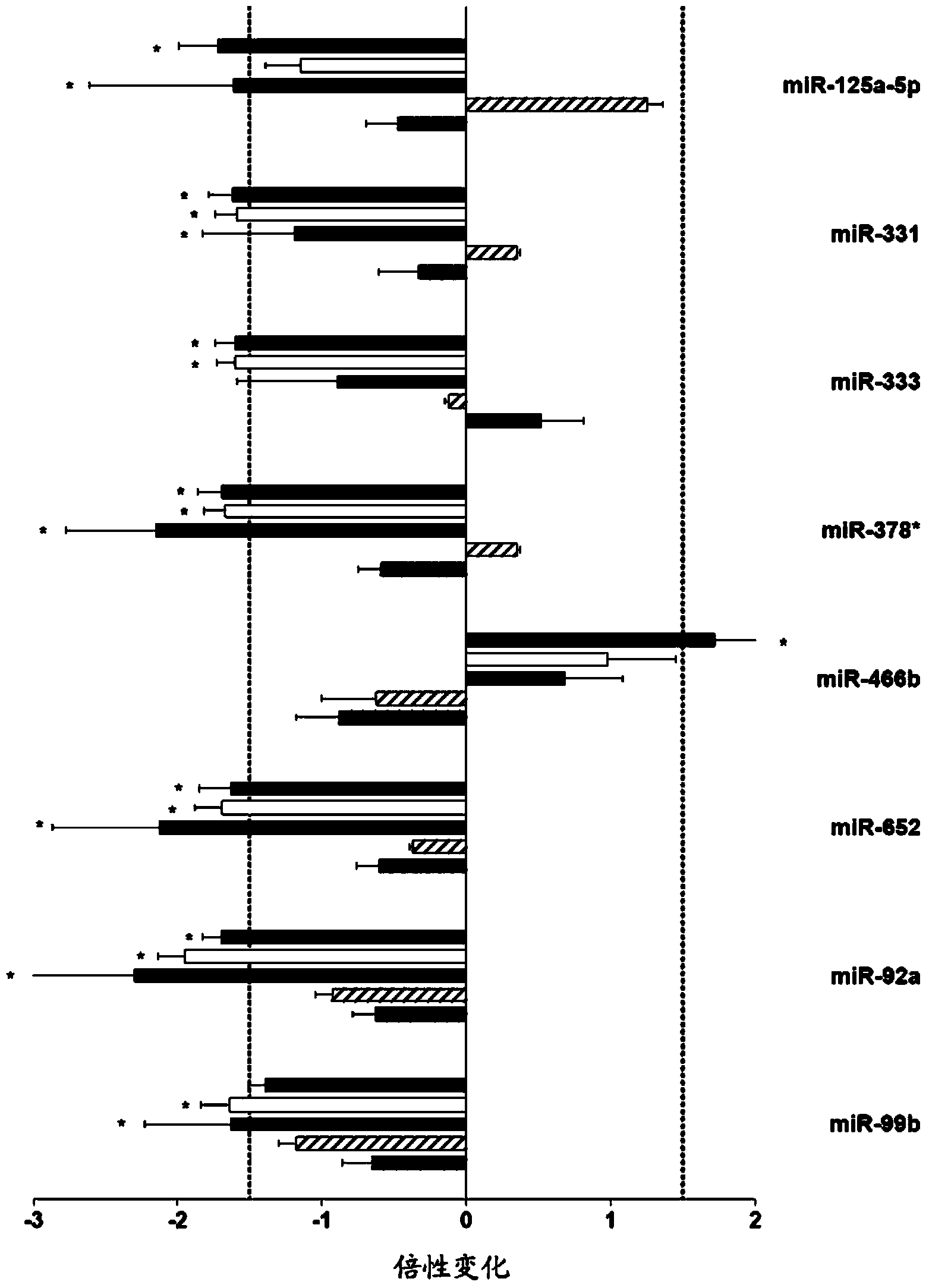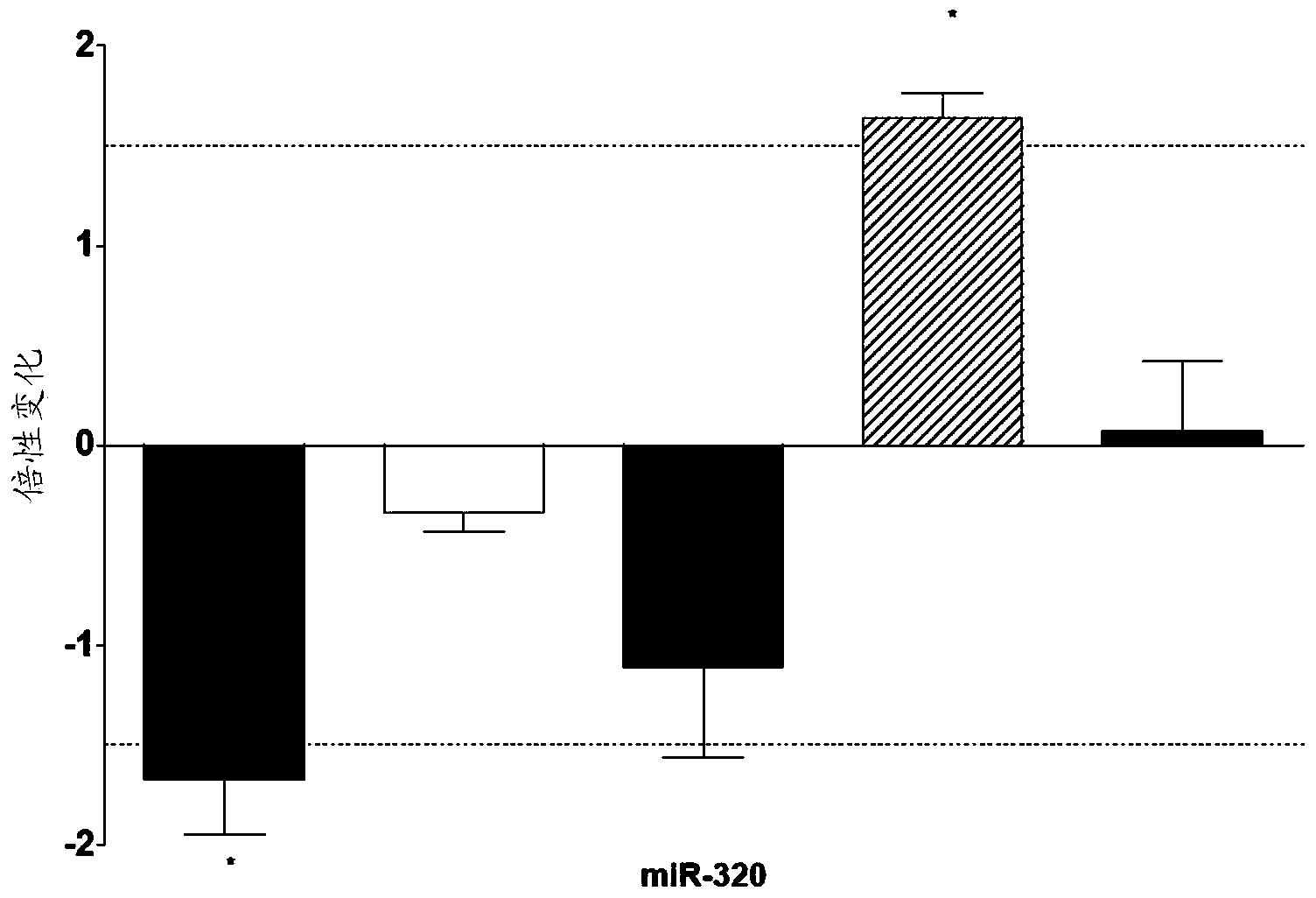Compounds for treatment of ischemic injury
A technology for compounds and ischemic attacks, applied in drug combinations, organic active ingredients, cardiovascular system diseases, etc., can solve the problems of not checking the potential role of miRNA, not during ischemia-reperfusion period, and not involving the protective effect of miRNA
- Summary
- Abstract
- Description
- Claims
- Application Information
AI Technical Summary
Problems solved by technology
Method used
Image
Examples
specific Embodiment
[0324] Recently, the heart has been shown to have an extraordinary ability to adapt to ischemia-reperfusion stress, and in ischemia-reperfusion, this molecular plasticity of the heart has been the focus of intense research in anticipation that the underlying mechanisms could be applied therapeutically Sexual development. Ischemic preconditioning is a well-described adaptive response in which brief exposure to ischemia significantly increases the heart's ability to withstand subsequent ischemic injury. In addition, the application of short-term ischemia-reperfusion following prolonged ischemia also conferred cardioprotection from myocardial ischemia-reperfusion, a phenomenon known as ischemic postconditioning.
[0325] The discovery of these two major forms of endogenous anti-ischemia, cardioprotective mechanisms, has led to the development of new modalities for protecting ischemic and / or reperfused myocardium, and details the Our understanding of the molecular basis of injury...
Embodiment 1
[0471] Identification of miRNAs involved in ischemia-reperfusion injury
[0472] To identify miRNAs involved in ischemia-reperfusion injury, pre- and post-processed miRNAs were isolated from the anterior wall of the left ventricle 2 hours after reperfusion. Relative changes in miRNA expression following ischemia-reperfusion were determined using a time-matched control group as a baseline. Approximately 150 of the total 350 rat miRNAs studied were shown to be expressed in response to ischemia-reperfusion. We determined the microarray data by the expression of a randomly selected set of 17 miRNAs measured by QRT-PCR. Changes in expression of 15 miRNAs were confirmed by QRT-PCR (Table 2).
[0473] To demonstrate whether cardioprotective adaptive effects lead to altered miRNA profiles in the myocardium, ischemic preconditioning and postconditioning-induced miRNA expression levels were compared with non-ischemia time-matched controls or non-treated ischemia-reperfusion groups or ...
Embodiment 2
[0477] Identification of cardioprotective miRNAs involved in ischemic preconditioning and postconditioning
[0478] We considered miRNAs to be associated with ischemic preconditioning when the preconditioning assay resulted in a significant attenuation or significant enhancement of the ischemia-reperfusion effect on miRNA expression. These miRNAs included those in which preconditioning induced significant changes in miRNA expression when compared to non-ischemia time-matched controls and untreated ischemia-reperfusion groups (miRNA-139-3p, 139-5p, 188, 192, Shaded bars in figure; see e.g. Figure 5 ). miRNAs significantly altered by ischemia-reperfusion and miRNAs significantly reversed by pretreatment were also assigned to this category (miRNA-320; Figure 3A). Changes in this group of miRNAs likely contribute to the formation of preconditioning-induced cardioprotection. The direction of change observed under preconditioning compared to ischemia-reperfusion indicates whethe...
PUM
 Login to View More
Login to View More Abstract
Description
Claims
Application Information
 Login to View More
Login to View More - R&D
- Intellectual Property
- Life Sciences
- Materials
- Tech Scout
- Unparalleled Data Quality
- Higher Quality Content
- 60% Fewer Hallucinations
Browse by: Latest US Patents, China's latest patents, Technical Efficacy Thesaurus, Application Domain, Technology Topic, Popular Technical Reports.
© 2025 PatSnap. All rights reserved.Legal|Privacy policy|Modern Slavery Act Transparency Statement|Sitemap|About US| Contact US: help@patsnap.com



